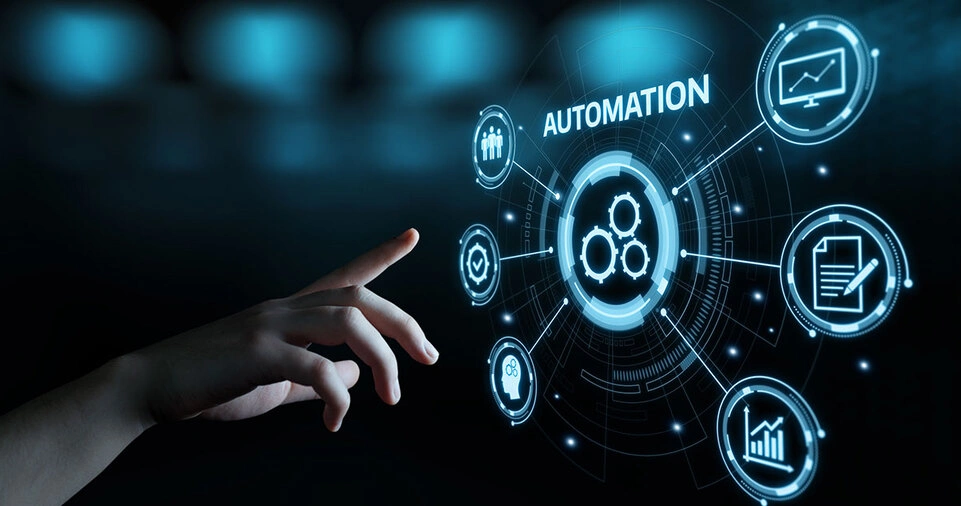Artificial Intelligence (AI) is revolutionizing the way businesses operate by automating complex processes, reducing manual workload, and improving efficiency.
Businesses across industries are leveraging AI-powered automation to streamline workflows, enhance customer service, and make data-driven decisions.
From small startups to large enterprises, AI tools are helping businesses stay competitive in a fast-evolving digital landscape.
The adoption of AI-driven automation not only boosts productivity but also reduces operational costs.
By minimizing human intervention in repetitive tasks, companies can allocate resources more effectively and focus on strategic growth.
AI can be applied in various business areas such as customer support, marketing, finance, human resources, inventory management, and more.
This article explores how businesses can use AI to automate different processes, the best AI tools available, and the steps required for successful AI implementation.
Whether you are a business owner looking to enhance efficiency or a professional aiming to optimize workflows, this guide provides a comprehensive roadmap for integrating AI into your business operations.
Step By Step Guide to Use AI to Automate Your Business Processes

Step 1: Identify Areas for Automation
Why Businesses Need AI Automation
Before implementing AI, businesses need to identify processes that can be automated for maximum efficiency. AI is most effective in areas where repetitive tasks consume significant time and effort.
Common challenges businesses face include high labor costs, errors in manual data entry, slow customer service, and inefficiencies in supply chain management.
AI automation can help eliminate these inefficiencies and optimize business performance.
Key Business Areas for AI Automation
Businesses can leverage AI automation in various domains, including:
- Customer Support: AI chatbots and virtual assistants can handle inquiries, provide instant responses, and reduce the workload on human support agents.
- Marketing and Sales: AI-driven tools analyze customer behavior, personalize marketing campaigns, and optimize email marketing automation.
- Finance and Accounting: AI-powered bookkeeping, automated invoicing, and fraud detection systems improve financial accuracy.
- Human Resources: AI helps in resume screening, employee onboarding, and engagement monitoring.
- Supply Chain Management: AI optimizes inventory management, demand forecasting, and logistics tracking.
- Data Analytics and Decision-Making: AI tools process large datasets to generate valuable insights and predictive analytics.
By identifying the right areas for AI automation, businesses can implement AI solutions that drive the best results.
Step 2: Choose the Right AI Tools
Understanding Different AI Technologies
AI-powered automation is driven by several key technologies, including:
- Machine Learning (ML): Helps businesses analyze data patterns and make predictive decisions.
- Natural Language Processing (NLP): Enables chatbots and virtual assistants to understand and respond to customer queries.
- Robotic Process Automation (RPA): Automates repetitive and rule-based tasks in finance, HR, and operations.
- Computer Vision: Used in quality control, facial recognition, and product categorization.
- Deep Learning: Enhances image recognition, fraud detection, and personalized recommendations.
Best AI Tools for Business Automation
Here are some of the top AI tools for automating business processes:
1. AI Chatbots for Customer Support
- ChatGPT – AI-powered chatbot for real-time customer support.
- Tidio – A live chat and AI chatbot solution for businesses.
- Intercom – Provides AI-driven customer engagement tools.
2. Marketing Automation
- HubSpot – AI-driven CRM and marketing automation platform.
- Marketo – Personalizes email marketing campaigns using AI.
- Persado – Uses AI to optimize marketing messages for better engagement.
3. Finance and Accounting Automation
- QuickBooks AI – Automates invoicing, tax calculations, and financial reporting.
- Xero – AI-powered bookkeeping and accounting software.
- Tipalti – Automates global payments and financial workflows.
4. AI in Human Resources
- LinkedIn Recruiter – AI-driven recruitment tool for talent sourcing.
- Pymetrics – Uses AI to assess candidate suitability for job roles.
- HireVue – AI-powered video interview platform with facial analysis.
5. AI for Data Analytics
- Tableau AI – AI-driven data visualization and analytics platform.
- Google AI – Provides advanced data insights and trend predictions.
- IBM Watson – AI-powered decision-making and data analysis tool.
Choosing the right AI tools depends on the specific needs of your business and the complexity of the tasks you want to automate.
Step 3: Train AI with Business Data
Why Training AI is Crucial
AI models require high-quality data to function effectively.
Training AI with relevant business data enhances its accuracy and decision-making capabilities.
Businesses must ensure their AI tools learn from clean, structured, and relevant datasets.
Steps to Train AI for Your Business
- Collect Business Data: Gather historical customer interactions, sales reports, financial data, and operational metrics.
- Clean and Organize Data: Remove errors, duplicate entries, and irrelevant data points.
- Define AI Goals: Specify what you want the AI model to achieve, such as improving customer support response time or enhancing sales forecasting.
- Implement AI Learning Algorithms: Use machine learning models that adapt to business patterns over time.
- Test and Optimize AI Performance: Continuously monitor AI-generated outputs and make necessary adjustments.
Well-trained AI systems improve operational efficiency and provide more accurate insights for decision-making.
Step 4: Integrate AI with Existing Systems
Importance of Seamless AI Integration
For AI automation to be effective, businesses must integrate AI tools with existing software systems, including CRM, ERP, and eCommerce platforms.
How to Integrate AI with Business Operations
- Customer Support: AI chatbots integrated with websites and social media for real-time responses.
- Sales & Marketing: AI-powered recommendation engines that suggest products to customers based on purchase history.
- Finance & Accounting: Automated invoicing integrated with banking platforms for faster transactions.
- Inventory Management: AI-driven demand forecasting integrated with supply chain management software.
Using APIs and cloud-based AI solutions simplifies integration and enhances compatibility with business systems.
Step 5: Monitor Performance and Optimize
Key Metrics to Track AI Performance
To ensure AI automation delivers value, businesses must track performance using key indicators such as:
- Customer Satisfaction Rate – Measures how well AI chatbots handle queries.
- Operational Cost Savings – Tracks reductions in labor and processing costs.
- Processing Speed – Evaluates how fast AI systems complete tasks.
- Error Rate Reduction – Monitors improvements in accuracy.
- Sales Conversion Rate – Assesses AI’s impact on marketing and sales efforts.
Regularly optimizing AI systems ensures that automation remains effective and continues to add business value.
Step 6: Ensure Security and Compliance
Why AI Security Matters
AI systems handle vast amounts of sensitive data, making security and compliance critical. Businesses must protect data privacy, comply with regulations, and prevent cyber threats.
Best Practices for AI Security
- Use Secure AI Platforms: Choose AI tools with strong security protocols.
- Comply with Data Protection Laws: Follow GDPR, CCPA, and industry-specific regulations.
- Monitor AI Behavior: Detect anomalies and prevent biased or incorrect decision-making.
- Update AI Systems Regularly: Ensure AI tools receive updates and security patches.
ALSO READ:
Conclusion
AI is transforming businesses by automating repetitive tasks, enhancing efficiency, and improving decision-making.
By identifying key areas for automation, selecting the right AI tools, training AI with relevant data, integrating AI with business systems, and continuously monitoring performance, businesses can harness the full potential of AI-driven automation.
Embracing AI-powered automation today can help businesses stay ahead in a competitive market and drive long-term success.

